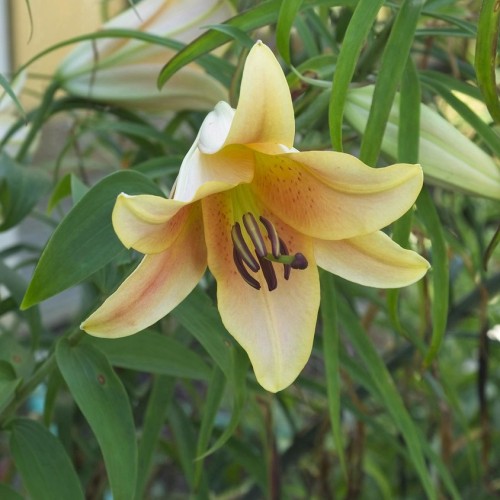
orienpet lily
Lilium ORANIA
Cycle:
Perennial
Watering:
Average
Hardiness Zone:
5 - 9
Flowers:
Flowers
Sun:
Full sun,part shade
Leaf:
Yes
Growth Rate:
High
Maintenance:
Low
Care Level:
High
watering
Orienpet lilies require moderate to regular watering. During the growth stage, water when the soil feels slightly dry on top and keep the soil slightly moist, never soggy. Generous watering may be necessary during hot spells, but make sure that there is adequate drainage. Once the flower buds form, reduce watering slightly. Once the flowers have fully bloomed, water only when necessary. In the winter, reduce watering to allow the foliage to die back.
sunlight
The orienpet lily (Lilium ORANIA) enjoys full sunlight for approximately 6-8 hours a day. Morning sunlight is best for this specific plant species as it will help them grow and bloom. Early afternoon sun on warm days will help the plants to bloom faster as the sunlight will help warm up the soil, while late afternoon sun should be avoided in order to prevent scorching. Additionally, locations with adequate ventilation are recommended as this will help prevent the lilies from becoming too hot. In summary, the ideal amount of sunlight for the orienpet lily is around 6- 8 hours of full sunlight from early morning till mid-afternoon.
pruning
Oriental lilies should be pruned annually to encourage strong, healthy growth and promote flowering. Generally, the best time to prune is in the early spring before new growth appears. Pruning is typically not required during the summer or fall. To prune your oriental lily, start by removing any yellow or dead foliage that may have been left over from the previous season. Then, cut back the stems of the lily to an inch above soil level. Remove any weak, thin, or damaged stems, as well as flowers that have already bloomed to encourage more growth. Finally, shape the plant to desired height or shape. Remember, too much pruning can hurt the plant, so it is important to be selective when pruning.
